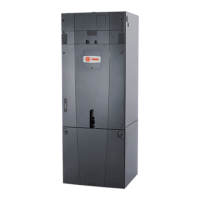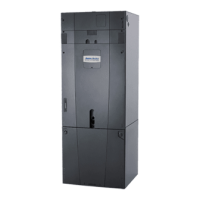MSDS – CS1000
Effective 5-1-2012
Page 2 of 6
3. COMPOSITION / INFORMATION ON INGREDIENTS
ACGIH OSHA
COMPONENT CAS # HAZARD WT % TLV
(TWA)
STEL PEL
(TWA)
STEL
Sodium metaborate 8 mol 10555-76-7 Irritant 10 – 15 NE NE NE NE
Sodium nitrite 7632-00-0 Hazardous 5 – 10 NE NE NE NE
Sodium metasilicate 6834-92-0 Irritant 1 – 5 NE NE NE NE
Amounts specified are typical and do not represent a specification. Remaining components are proprietary, non-hazardous and/or present at amounts below reportable limits.
4. FIRST AID MEASURES
EYE CONTACT: If this product contacts the eyes, immediately flush eyes with plenty of clean running
water for at least fifteen (15) minutes, lifting the upper and lower eyelids occasionally. Remove contact
lenses if worn. Seek medical attention if irritation persists.
SKIN CONTACT: If this product contacts the skin, immediately flush the affected area with soap and
water for at least fifteen (15) minutes. If the product penetrates the clothing, promptly remove the
contaminated clothing or shoes, and flush the affected area as described. Seek medical attention if
irritation persists.
INGESTION: If this product is ingested, drink small amounts of water and monitor superficial effects on
mouth and esophagus. If irritation is noted, seek medical attention promptly. Do NOT induce vomiting
unless directed to do so by medical personnel. Never give anything by mouth to an unconscious person.
INHALATION: If this product is inhaled and symptoms occur, move the exposed person to fresh air
promptly. Seek medical attention if symptoms persist.
NOTES TO PHYSICIAN: Treat as a moderately strong alkali exposure. In addition, for ingestion of
larger amounts, maintain adequate kidney function and force fluids. Gastric lavage is recommended for
symptomatic patients only. Hemodialysis should be reserved for massive acute ingestion or patients with
renal failure.
5. FIRE FIGHTING MEAURES
FLASH POINT: None – aqueous solution.
FLAMMABLE LIMITS: NA
AUTOIGNITION TEMPERATURE: NA
EXTINGUISHING MEDIA: Use water, foam, dry chemical or carbon dioxide to extinguish fire.
FIRE/EXPLOSION HAZARD: Dried residue can thermally decompose giving off irritating and possibly
toxic fumes.
FIRE FIGHTING EQUIPMENT: Fire fighters should wear full protective equipment, including a self-
contained breathing apparatus.
SPECIAL PROCEDURES: Use water to cool containers exposed to a fire.
HAZARDOUS COMBUSTION PRODUCTS: Oxides of nitrogen, oxides of carbon and possibly toxic
phosphines. May leave a caustic residue.

